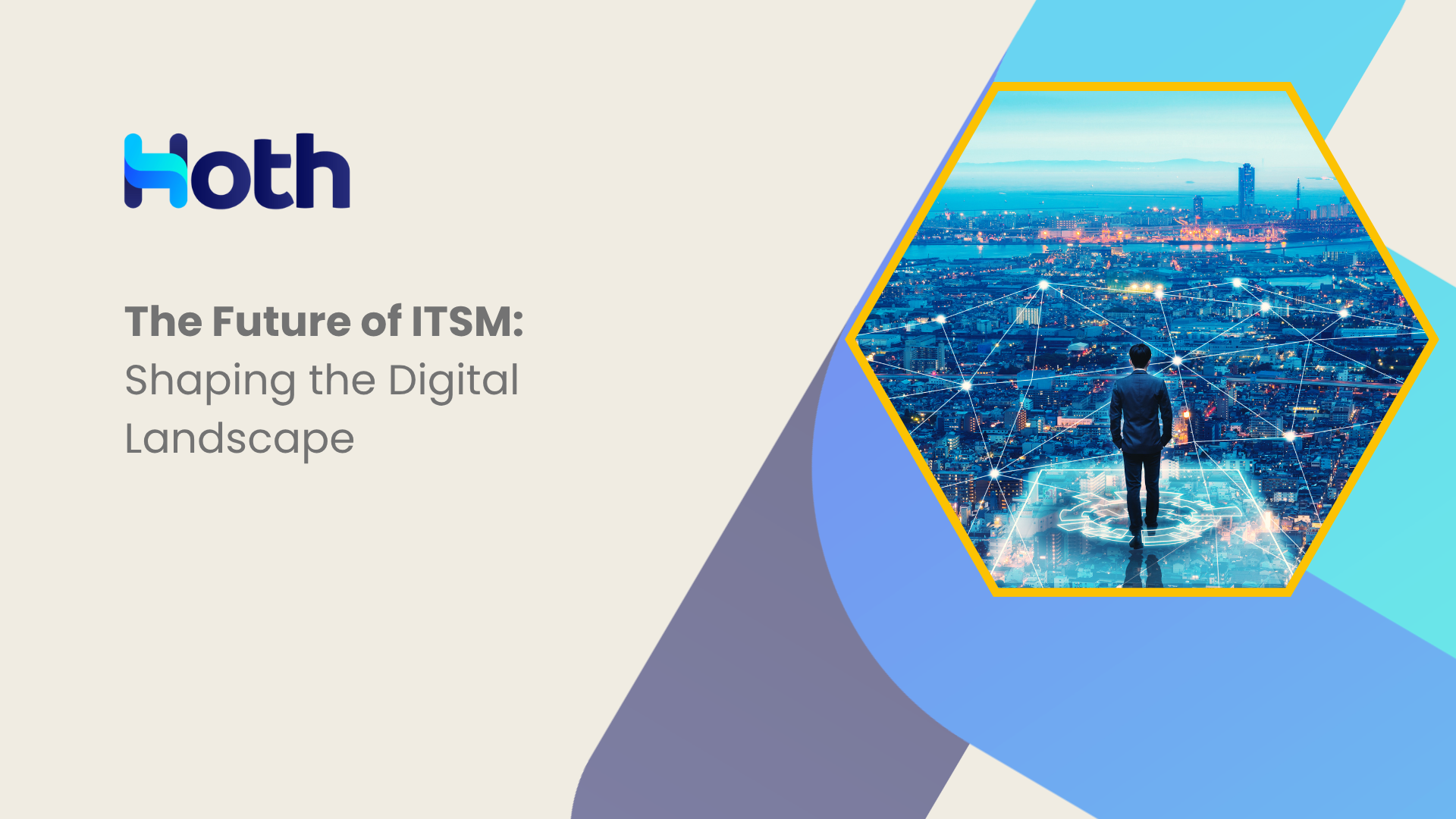
IT Service Management (ITSM) has become the backbone of organisations striving for operational excellence. As businesses increasingly embrace digital transformation, the future of ITSM is poised for a revolution that will redefine how IT services are delivered and managed. Let’s explore the key trends shaping the future of ITSM and their implications for businesses and IT professionals.
1. AI and Automation: Driving Efficiency and Innovation
Artificial Intelligence (AI) and automation are no longer buzzwords; they are becoming integral to ITSM. AI-powered tools, such as chatbots and virtual agents, streamline service delivery by providing instant resolutions to common issues. Predictive analytics, another game-changer, allows IT teams to anticipate problems before they occur, reducing downtime and improving user satisfaction.
Automation further enhances efficiency by eliminating repetitive tasks, enabling IT teams to focus on strategic initiatives. In the future, we can expect AI to evolve into more advanced forms, such as cognitive computing, where machines learn and make decisions independently, taking ITSM to the next level.
2. Hyper-Personalisation of IT Services
As customer expectations rise, ITSM must move beyond one-size-fits-all solutions. The future lies in hyper-personalisation, where IT services are tailored to individual user needs. Leveraging data analytics and user behaviour insights, IT teams can deliver highly customised experiences that boost productivity and satisfaction.
This trend will also extend to self-service portals, which will evolve into intelligent, adaptive platforms that understand user preferences and seamlessly guide them to solutions.
3. Integration of ITSM with DevOps and Agile Practices
The traditional boundaries between ITSM, DevOps, and Agile are blurring. Modern businesses demand agility and rapid innovation, necessitating closer collaboration between these domains. Future ITSM frameworks will integrate seamlessly with DevOps pipelines, enabling faster incident resolution and streamlined change management.
By adopting agile methodologies, ITSM can become more flexible, aligning IT services with evolving business needs. This integration fosters a culture of collaboration and continuous improvement, essential for thriving in a dynamic market.
4. Shift to Proactive Problem Management
Reactive problem management is becoming a thing of the past. The future of ITSM emphasises a proactive approach, leveraging real-time monitoring and advanced analytics to identify and address potential issues before they impact users.
Proactive problem management not only minimises disruptions but also enhances trust in IT services. As technologies like IoT and edge computing become mainstream, ITSM must adapt to manage a more complex and distributed IT environment proactively.
5. The Role of ITSM in Sustainability
Sustainability is a growing priority for organisations worldwide. ITSM can play a pivotal role in driving green IT initiatives, such as optimising energy usage in data centres and promoting remote work to reduce carbon footprints.
Future ITSM strategies will include sustainable practices as a core component, aligning IT goals with broader environmental objectives. By doing so, organisations can not only contribute to a healthier planet but also enhance their reputation and compliance with regulations.
6. Enhanced Security and Compliance Management
With the rise of cyber threats and stringent regulations, security and compliance are critical to ITSM. The future will see more robust integration of security practices into ITSM workflows, ensuring that services are not only efficient but also secure.
Advanced tools and automation will help IT teams manage compliance requirements seamlessly, reducing risks and maintaining trust. AI-driven threat detection and response will become a standard feature of ITSM platforms.
How Hoth Can Help
Hoth provides cutting-edge ITSM solutions tailored to meet the evolving demands of modern businesses. With a focus on simplicity, flexibility, and innovation, their platform empowers organisations to streamline service delivery, enhance collaboration, and improve user experiences.
Hoth’s suite of tools includes:
- Intelligent Automation: Automate repetitive tasks and improve efficiency with workflows designed to adapt to your organisation’s unique needs.
- Customizable Self-Service Portals: Offer personalised experiences for users, enabling them to find solutions quickly and effortlessly.
- Robust Security Features: Ensure compliance and protect your IT infrastructure with advanced security measures integrated into their ITSM platform.
- Proactive Problem Management: Leverage real-time monitoring and analytics to anticipate and resolve issues before they escalate.
By partnering with Hoth, businesses can stay ahead in the rapidly evolving IT landscape, ensuring their ITSM strategies are future-proof and aligned with their long-term goals.
Conclusion
The future of ITSM is an exciting frontier, brimming with opportunities and challenges. From harnessing AI and automation to embracing sustainability and enhancing security, ITSM is set to evolve into a more dynamic and integral part of business operations.
For IT professionals and organisations, staying ahead in this ever-changing landscape requires continuous learning, adaptability, and a proactive mindset. By leveraging the trends shaping the future of ITSM, businesses can not only achieve operational excellence but also drive innovation and create lasting value.
Check out our ITSM page for more information.



